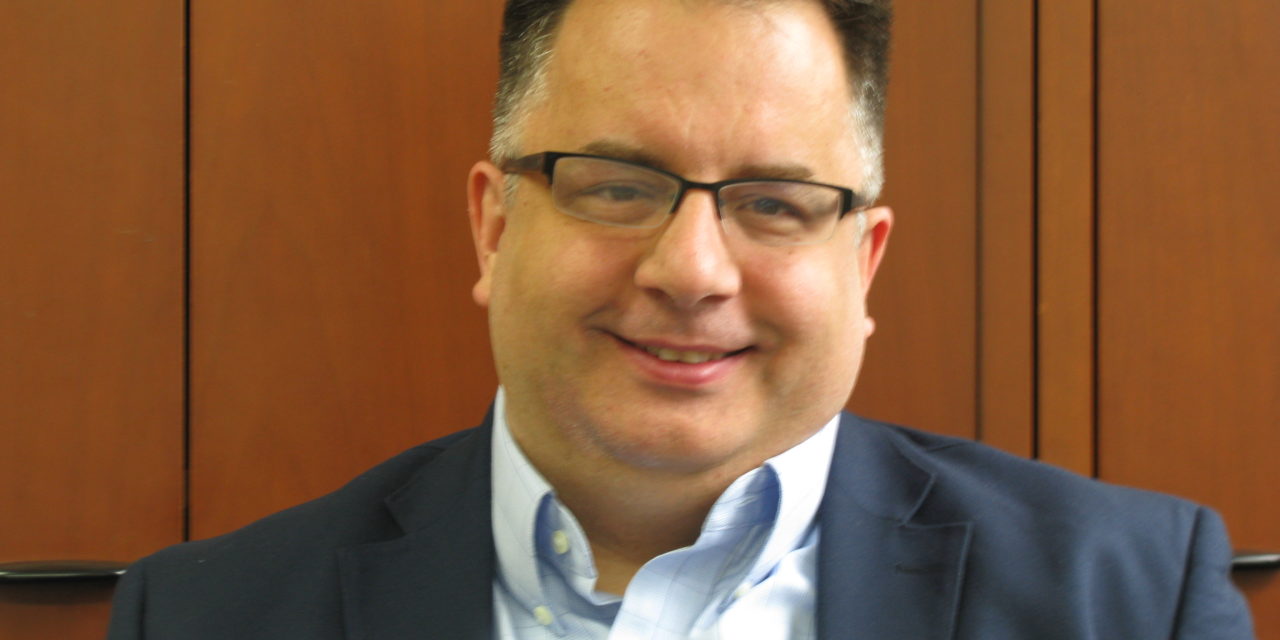
On the Record with J.P. Wieske, Deputy Insurance Commissioner

J.P. Wieske, deputy insurance commissioner and Group Insurance Board member, expects the Legislature’s Joint Finance Committee to take a closer look at self-insurance, despite leaders of the committee saying they expect to vote down the plan.
“I had a responsibility on the GIB to look at this issue,” Wieske said. “And I am, both personally and professionally, 100 percent comfortable with where we landed in our decision as a board to move forward.”
Wieske spoke with Wisconsin Health News this week about self-insurance and potential changes coming to the state’s individual market.
Edited excerpts are below.
WHN: JFC co-chairs – Sen. Alberta Darling, R-River Hills, and Rep. John Nygren, R-Marinette – have said they don’t expect to approve the contracts to self-insure the state employee health plan. As a member of the Group Insurance Board, what’s your response?
JW: I took that position very seriously and we had a sort of unique group of people on that board to look at that, including Mike Farrell, who’s the board chair and has experience as an agent, Herschel Day, who’s an actuary. And all of us take that responsibility very seriously. We have a responsibility both to the employees of the state to make sure we’re delivering high quality healthcare and to the taxpayers to make sure we’re doing it in an affordable way. I think when the group that reviewed the RFP worked directly with the consultant and looked at it, I think we all felt, at least all of us who voted for it, all felt very comfortable with the direction. I think we feel comfortable with the savings number, that this is a real and deliverable number. It reflects the fact that we already had a self-funded vendor for our statewide plan. We already had a self-funded vendor for pharmacy. We already had a self-funded vendor for dental. And the state is of a significant size that reflects very little real risk as far as financials. And that number of lives is a very predictable sort of approach. On top of that, you see a program that is delivering the same providers by and large to the state employees that they’re accessing today. We saw it as a fairly easy decision to make. The state would save money. The employees would continue to get high quality healthcare through the state without having to make adjustments in their plan design. Over the longer term, the state would be able to take a look at all the data that’s coming in from a self-funded program to make sure that the program remains affordable and accessible for state employees. I think there are a lot of positives. I can’t say I entirely understand the sort of knee jerk reaction to the approach that certain segments of the interest groups have had. I’m hopeful and expect that Joint Finance will look at this with more detail and they’ll examine the contracts and make an appropriate decision.
WHN: The co-chairs are both interested in trying to get to the same level of savings, perhaps through changes to the benefit program. Are there other ways of reaching that amount of savings through changes to the program other than self-insurance?
JW: From that standpoint, part of the issue is self-funding makes it easier for us, because we own the data, to look at what those options are further down the road. So we’re making assumptions based on what a fully insured plan will charge us and so we sort of have an indirect relationship with those changes. If the Legislature wants to find additional savings, there’s no reason that you can’t do self-funded and plan adjustments if they feel that’s appropriate. Theoretically, maybe you get there. I suppose you can find some ways to get there. But I’m not sure if you’re really interested in saving the state money and delivering care to state employees, why you shouldn’t look at both. I think self-funded over the long haul would be an important piece of understanding how any changes you make to the market, any change you make to the plan, impact the actual cost that the state pays for healthcare.
WHN: Nygren has also questioned the reserves at ETF. What are those reserves?
JW: ETF has to talk about those specifics of the reserves. I’m a board member and we sort of look at that, but the details of those reserves and those amounts I’d suggest you talk to ETF about. Having said that, look, with any sort of plan like this, you see some variations of what happens year to year. Under our guidance, we have some options about what to do when there are in fact reserves. The board in its fiduciary duty has taken a look at the reserves and tried to be prudent in our use of them. That’s what those reserves reflect – the prudent use of the reserves on a go-forward basis. It was not a matter of hoarding the reserves to a move to self-funded by any means. But I think the good news is that from a self-insurance standpoint and an actuarial perspective, our actuaries believe that given the size of the group, given the predictably of the group, given the reserves, we’re in a good position right now to actually have a discussion about self-funding going forward and that the state can do it responsibly.
WHN: If the Legislature doesn’t do this, what are the next steps for the Group Insurance Board?
JW: I think we have to go back to the drawing board and figure out what we do going forward as a board. This was not a sort of approach by the board to sort of ham handedly make a decision and make it difficult on ourselves to go back. The board legitimately felt after a lot of discussion, after a couple of delays in votes – we looked at this very seriously and spent hours and hours discussing all these issues – we came up with the best decision based on all the information we had from the consultant, which was very, very detailed. On top of that, there were folks on the RFP committee who looked at this in even more detail and poured over the details of the plan. We felt very confident with where we sat and made our decision. We’ll have to go back to the drawing board if this ends up being knocked out by the Legislature.
WHN: As far as the individual market, some states are seeing insurers leave or reconsider their participation. Do you have particular concerns about any regions or areas of Wisconsin?
JW: I think what we’re seeing is another year where insurers are shifting their market, and they’re shifting their service areas. We expect that. We’ve heard rumblings. We don’t have anything specific as to what insurers will do. Obviously you have some public statements by some major insurers questioning what they’re going to do going forward. Hopefully, they’ll stay in the market and we can move forward. We have 15 carriers in the Wisconsin insurance market, which makes us the envy of a lot of states. But if you look at a particular regions on a county-by-county basis, we have Menominee County, which has one insurer. We have Pierce, Polk and St. Croix, which have two. We have a lot of the lake shore, which is Congressman Mike Gallagher’s district, where we have three and two major outside players in that market. We have northern Wisconsin where there’s a lot of area where there’s two. I think there’s some areas where we’re hopeful there’s no risk, but there’s a chance that we could have the same issues as other states.
I would point out the state of Iowa where there’s literally not a single insurer right now who is planning to participate in the individual market. I don’t think we’re anywhere close to there. But we’re concerned that there may be pockets of the state where insurers look at their markets and make a different decision this year than they did last year.
WHN: What’s the underlying causes behind the concerns?
JW: I think it comes down to the individual market and whether or not the way it’s designed under Obamacare is sustainable. Not to pick on Iowa, but if you look at Iowa, you essentially have the option to have a monopoly and everybody has refused to this point to offer coverage. In Alaska, you had an insurer that was going to exit the market until they created a reinsurance program for their one insurer. They’re using their entire premium tax to support the existence of that one insurer in the individual market. Last year in Minnesota, you had significant movement of a major carrier out, where 100,000 people lost their coverage. They’ve put together a package costing over the next several years almost $800 million in order to support their individual market. Those are states that are sort of all across the country in different areas. Arizona and Tennessee also have significant issues. I think the issues are the same. The individual market is a difficult market and the current structure is making it difficult for insurers to continue to operate. We’ve seen a significant loss of capital in the individual market by a number of insurers.
WHN: Is uncertainty at the federal level, like around the future of cost-sharing reduction payments, a reason insurers might be giving pause?
JW: I think there’s concerns. I think the insurers have been very clear in their public statements about concerns about the cost-sharing reduction payments. And it’s important to note that that mandate is on the insurers. They have to provide that coverage to individuals regardless of whether those cost-sharing subsidies are there or not. That’s obviously a significant expense on a market where they’re already in some cases losing some money. So I think that they’ve indicated that’s a concern. I think insurers are looking for solutions. And I think the [American Health Care Act] reflects their effort to look for solutions because the individual market is in crisis in a lot of states.
WHN: Do you think the AHCA would stabilize the market? Commissioner Ted Nickel called it a “an important step.” Is this going to solve the issues you’re raising?
JW: I think functionally the main issue for states across the country is that we have a better understanding of our market than the federal government does and what the issues are. Before the ACA, we had 25 carriers in our individual market. Consumers had the choice between HMOs, PPOs, national companies, local companies, for-profit companies and nonprofit companies. And in a lot of cases, for a lot of consumers in Wisconsin, while we still have a good number of carriers and we work to minimize the disruption for consumers, the market is not the same as it was. They have a lot fewer choices. And so I think reflecting flexibility and control of the states of their markets, I think is the most important feature. We understand, our state legislators understand, our governor certainly understands, the needs of the market.





